#Caryl Chessman
Text
Rudolph Wright, last to die in California for a crime other than murder.
It was January 11, 1962 on San Quentin Prison’s notorious ‘Condemned Row’ on the top floor of North Block. Caryl Chessman, California’s notorious ‘Red Light Bandit,’ was long gone. Executed on May 2, 1960, he was a mere memory. An enduring memory, granted, but dead and gone all the same. Merle Haggard, in for robbery on a three-to-fifteen-year sentence, was paroled just over two years previously.…
View On WordPress
#Albert Kessel#Billy Monk#California#capital punishment#Caryl Chessman#Clinton Duffy#Condemned Row#crime and punishment#death penalty#Ed Davis#Folsom Five#Fred Barnes#gas chamber#Goodwin Knight#Governor Edmund Brown#Harvey Glatman#Human Tiger#Jacob Oppenheimer#James Kendrick#Leanderess Riley#Merle Haggard#Pat Brown#Rabbit#Robert Cannon#Rodney Greig#Rudolph Wright#San Quentin#Section 4500#true crime#Warden Clarence Larkin
0 notes
Text
sometimes you go to um… New York citay .. and it’s like… echos of the broadway Everglades with our mythical madonnas still walking in their shades Lenny Bruce declares a truce and plays his other hand marshal mcluhan casual viewin head buried in the sand sirens on the rooftops wailing but there’s no ship sailing Groucho with his movies trailing stands alone with his punchline failing klukluxklan serve hot soul food and the band plays in the mood the cheerleader waves her cyanide wand there’s the smell of peach blossom and bitter almond caryl chessman sniffs the air and leads the parade he knows in a scent you can bottle all you’ve made there’s Howard Hughes in blue suede shoes smiling at the majorettes smoking winston cigarettes and as the song and dance begin the children play at home with needles, needles and pins
2 notes
·
View notes
Photo

Aug. 1, 1962 - Illinois Governor Otto Kerner spared Paul Crump (pictured), a condemned killer, from the electric chair today and ruled that he must spend the rest of his life in prison with no hope of freedom. The Governor commuted the 32-year-old Negro’s death sentence only 32 hours before Crump was to die in Chicago’s electric chair. Crump’s sentence was changed to 199 years’ imprisonment “without parole.” Governor Kerner’s decision ended a 9-year legal battle in which Crump had received 14 stays of execution, 5 more than Caryl Chessman had been granted before he was executed in California. Crump, who had expressed a desire “to live so that I may justify my life,” broke into sobs when he got word of the commutation. “I thank God, Governor Kerner, and all the many, many people who worked to bring this case to the Governor’s attention,” Crump said. The Governor said he was convinced, after a long study of the record, that “the embittered, distorted man who committed a vicious murder no longer exists.” “Under these circumstances, it would serve no useful purpose to society to take this man’s life,” Gov. Kerner said. Crump was twice convicted of killing an unarmed guard, Theodore P. Zukowski, during a $20,000 robbery of a Chicago stockyards plant in March 1953. He admitted the killing, then repudiated his admission. His first conviction was reversed by the Illinois Supreme Court, but a second trial resulted in a death sentence. Crump’s lawyers admitted he had been an “illiterate, beastly, animalistic criminal” when he first was imprisoned. They presented affidavits and testimony, however, from prominent clergymen, prison officials, and others to prove a “miracle of rehabilitation.” Friends of Crump, including Warden Jack Johnson of the Cook County Jail, said he had performed “a thousand acts of contrition” in befriending other prisoners. During his long wait, Crump wrote a novel, “Burn, Killer, Burn,” which is to be published in a few months. #capitalpunishment #crime #deathpenalty #illinois
1 note
·
View note
Text
Done too soon
by Neil Diamond
Jesus Christ, Fanny Brice
Wolfie Mozart and Humphrey Bogart
And Genghis Khan
And on to H. G. Wells
Ho Chi Minh, Gunga Din
Henry Luce and John Wilkes Booth
And Alexanders King and Graham Bell
Ramar Krishna, Mama Whistler
Patrice Lumumba and Russ Colombo
Karl and Chico Marx
Albert Camus,
E. A. Poe, Henri Rousseau
Sholom Aleichem and Caryl Chessman
Alan Freed and Buster Keaton too
And each one there
Has one thing shared
They have sweated beneath the same sun
Looked up in wonder at the same moon
And wept when it was all done
For bein' done too soon
For bein' done too soon
For bein' done

Click here for recording
2 notes
·
View notes
Video
youtube
Merle Haggard - “All American Cowboy”
Ridin’ West, Volume One
Song released in 1983. Compilation released in 1995.
Outlaw Country
There's a long line of country music dudes who just love to boast about living a rough-and-tough, down-and-dirty, nose-to-the-grindstone, man's man kinda lifestyle, but few of them actually end up practicing what they preach. But Merle Haggard was not one of those country music dudes. Haggard was a true-blue, authentic real one.
As a pioneer of the outlaw country movement, which sought to take the country reins away from the domineering glitz-and-glam pop of Nashville's besuited backroom hitmakers, Merle Haggard was actually an outlaw for much of his own life. And much of his music reflects on his previous way of life, before he went on to become a trend-bucking all-time country supernova.
At the age of nine, Haggard became a rebellious child when his dad unexpectedly passed away. He was a two-bit criminal ruffian who was constantly on the lam from juvenile detention centers, and then as he got older, jails and prisons. In 1957, at about 20 years old, Haggard was arrested for trying to rob a restaurant and was sent to a jail in Bakersfield, California. After an escape attempt, he was then transferred to San Quentin. There, he was caught drunk and was found to be running a gambling and booze racket, too. This landed him a week in isolation, and while in isolation, he engaged in a series of deep conversations with a death row inmate and author by the name of Caryl Chessman, a man who holds the rare distinction of being one of the only people in the US to have been legally executed for committing crimes other than murder, treason, or espionage. These conversations that Haggard had with Chessman inspired him to ditch his criminal way of life and straighten himself out. Haggard was then released on parole in 1960 and his country music career began to take off a few years later.
So, here we have a rare bit of tender and heartfelt outlaw goodness from Haggard, a song called "All American Cowboy," which doesn't appear to have ever been on any of Haggard's own releases, but originally exclusively appeared in 1983 on a compilation that was put out by Kat Family Records called All American Cowboys.
A lot of outlaw country isn't the wild and braggadocio, Gunfight-at-the-O.K.-Corral kind of stuff that you might expect it to be, given its name. That's because while outlaw country does tell its fair share of tales about outlaws, it's also a strain of country that deems itself as "outlaws" from Nashville's gaudy-pop stranglehold on the industry. Unimpressed by Nashville's formulaic and shiny, session musician-rich assembly line of tunes, outlaw country serves as a rawer, more intimate counterbalance.
And at the end of the day, that's what this song's really all about. With his smooth, trademark country vocal stylings, Haggard delivers the first-verse line, "this song is sung for the wrangler, and played by a real cowboy band." And notice how he cleverly cracks his voice on that "wrangler" word. It's a subtle nod to the idea that this outlaw brand of country music that he makes has a real level of humanity to it, charming warts and all, which is something that you won't get from the preening Nashvillians (or maybe we should call them the Nashvillains 🤔). With soft touches of guitar and a slowly plodding drumbeat, Haggard goes on to list the wellspring of song topics that exist in this world ("truck songs and train songs; lots of insane songs"), but what makes a good cowboy song, or a good outlaw country song, is a song that has some depth to it; one that comes from someone who has "a wee bit o' wrangler, and even a lady" within themselves.
A great, rare cut from this all-American cowboy himself.
#outlaw country#country#country music#classic country#music#80s#80s music#80's#80's music#80s outlaw country#80's outlaw country#80s country#80's country#80s country music#80's country music
3 notes
·
View notes
Text
At his announcement in January of his candidacy for California governor, Ronald Reagan had blamed the original Watts riot on the “philosophy that in any situation the public should turn to government for the answer.” Now he denounced Governor Brown. And the New York Times—which had last taken note of the California governor’s race in mid-February, commenting on how little attention the actor Ronald Reagan had been able to garner since “his dramatic and carefully rehearsed television entry into the race” (the paper had sent its Hollywood correspondent to cover it, and he had dwelled on the living-room set with the crackling fire, and props such as the bottle Reagan waved while warning how “social tinkering had caused the layoff of 200 workers in ketchup factories”)—now reported, “A withering crossfire of political accusations emerged today after Tuesday’s violent outbreak.” Reagan had charged that Brown had left the state despite warnings of trouble; Brown harrumphed that if he reacted to every tip he got about impending violence in Watts, he couldn’t do anything else.
Brown didn’t feel much need to defend himself. Surely the state would remember his political debut in the 1950s as a law-and-order district attorney, and that he was the governor who had seen to the execution of the Red Light Bandit, Caryl Chessman, after his Republican predecessors had dithered in the face of mercy pleas from everyone from Eleanor Roosevelt to Billy Graham.
Reagan’s Republican primary opponent, former San Francisco mayor George Christopher, let the two fight it out among themselves. He was the primary front-runner—easily “matching oratorical skill” with Reagan, the New York Times thought, in an article enumerating Reagan’s manifold defects: his toxic ties to the far right and the Goldwater campaign; the bright, young party moderates who viewed the prospect of a Governor Reagan “with something approaching horror”; his rookie mistakes. “You know, a tree is a tree, how many more do you need to look at?” he had blundered in a speech on conservation. It was at that point that the San Francisco Chronicle reported that his campaign would soon “bottom out.” George Christopher joked that if Brown knew what was good for him, he’d start working for Reagan.
More or less, Brown was doing exactly that. “‘Bring him on’ is our motto,” his press secretary had scrawled on the bottom of the January 1965 gossip item that Reagan was going to run.
— Rick Perlstein, Nixonland: The Rise of a President and the Fracturing of America (2008)
2 notes
·
View notes
Photo
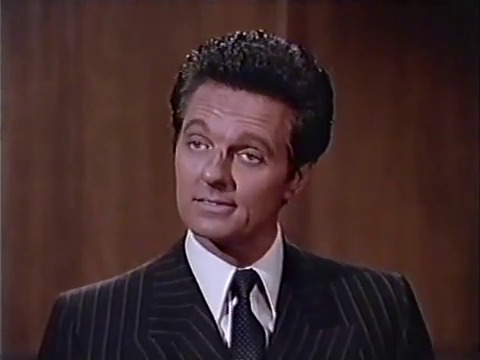
Alan Alda and his fake nose in “Kill Me If You Can,” a made-for-TV movie about Caryl Chessman, who was executed in California’s gas chamber in 1960 for kidnapping and sexual assault.
5 notes
·
View notes
Text
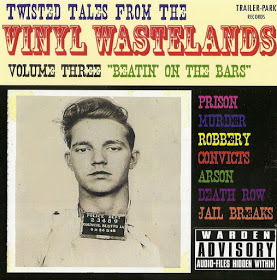
1. Travelin' Texans - Beatin' On The Bars (2:01)
2. Curley Ray Benson - The Prison Blues (2:59)
3. Sanford Clark - It's Nothing To Me (2:28)
4. Wray Brothers - Ninety Nine Years To Go (2:28)
5. Jimmy Minor - Death Row (2:32)
6. Lee Hazlewood - Girl On Death Row (2:41)
7. Bill Carter - Shot Four Times (2:11)
8. Blankenship Brothers - Lonesome Old Jail (2:49)
9. Hylo Brown - Sad Prison Song (2:23)
10. Gary Williams - Walla Walla State Prison (2:17)
11. Jack Barlow - Step Down (1:46)
12. Johnny Starr - Lewisburg Prison (3:04)
13. Johnny Bond - The Tijuana Jail (2:28)
14. Jaycee Hill - Crash Out (1:54)
15. Stonewall Jackson - Run (2:30)
16. Tommy Faile - The Rest Of My Life (2:18)
17. Eddie Noack - Inviible Stripes (2:18)
18. Freddie Hart - The Wall (2:47)
19. Bobby Sykes - The Guard On The North Wall (3:39)
20. Howard Crockett - I Got Stripes (2:02)
21. Troy Crane - Texas Huntsville Prison (2:32)
22. Tom Edwards - Cook County Jail (2:35)
23. Jeff Johnson - Doin' My Time (2:45)
24. Tommy Dee - The Chair (2:24)
25. Tommy Hill - Walls Of Stone (2:53)
26. Willie Swanson - Arson Carson (1:57)
27. Roy Montague - Life To Go (2:13)
28. Country Johnny Mathis - Caryl Chessman (2:52)
29. Horace Heller - Ed's Place (2:52)
30. Bennie Hess - Walking Last Mile (3:23)
31. Outro - Diary Of A Mass Murderer (1:25)
6 notes
·
View notes
Text

In the United States, the gas chamber as a method of execution was first adopted in Nevada in 1921, with Gee Jon to be the first man executed by lethal gas in 1924. By 1951, this form of execution had been picked up by 11 states, each with their own procedure and type of chamber. In general, however, the condemned inmate is strapped to a chair in an airtight chamber, and a container of, most often, sulfuric acid, would be placed beneath the chair. The executioner then pulls a lever that released sodium cyanide crystals into the pail, starting a chemical reaction that disperses hydrogen cyanide gas into the chamber. While the inmate is usually instructed to breathe deeply in order to speed up the process, most attempt to hold their breath and struggle for as long as they can.
As of the 1990s, this method has been deemed cruel and unusual by most states, as studies and inquiries by courts have found that the prisoner does not lose consciousness immediately upon inhalation of the chemical. According to former San Quenton, California, Penitentiary warden, Clifton Duffy, “At first there is evidence of extreme horror, pain, and strangling. The eyes pop. The skin turns purple and the victim begins to drool.” In 1960, Caryl Chessman told reporters he would nod his head if it began to hurt while in the chamber, and witnesses said he nodded his head for several minutes before finally losing consciousness.
#execution#forms of execution#execution methods#gas chamber#death by inhalation#painful deaths#cruel and unusual punishment#prisons#prisoners#death row#history#dark history#tw graphic language#tw death mention#tw death#tw execution#cyanide#cyanide gas#executioners#creepy#scary#true crime#true crime community#tc#tcc#eerie#macabre#call of the macabre
8 notes
·
View notes
Photo






🌸The cheerleader waves her cyanide wand,
there’s a smell of peach blossom and bitter almonde.
Caryl Chessman sniffs the air and leads the parade,
he know in a scent, you can bottle all you made.🌸
#gameplay#garden legacy#peach#my editing#i'm really happy with this?#i wasn't expecting to do a lot with this#yet here we are#i also looked up songs containing the phrase 'cherry blossom'#and i found a super awesome album by genesis that i've never heard before#and it's super good#i know what i'm gonna be binging now#the story of the album?#trippy as hell#makes me think of my own fucked up dreams#peach blossom**
28 notes
·
View notes
Text
Lloyd Sampsell, California's 'Yacht Bandit.'
Lloyd Sampsell, California’s ‘Yacht Bandit.’
A free chapter from my latest book ‘Murders, Mysteries and Misdemeanors in Southern California,’ out now online and i. bookstores.
“I don’t know why this should bother me, but why in the hell should people be interested in what the condemned man ate for breakfast?” – Sampsell just before his execution.
Lloyd Sampsell was a bank robber, killer and thief like any other. Unlike most California…
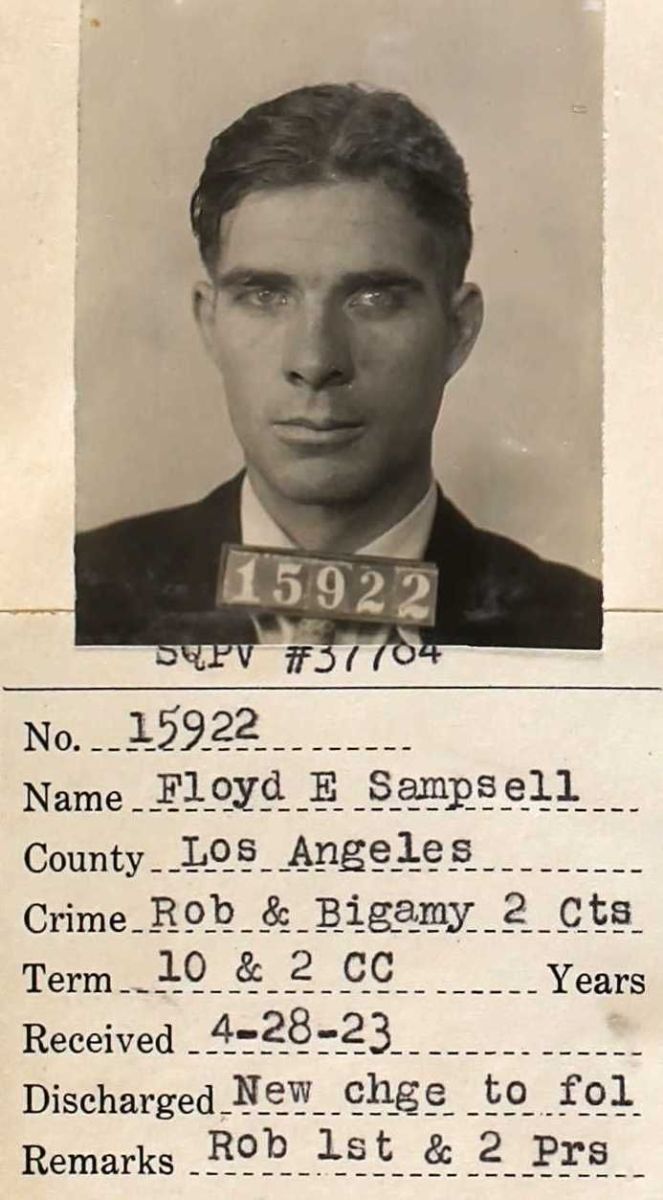
View On WordPress
#Alcatraz#Arizona#Arthur Smith#Associate Warden Douglas Rigg#Bonnie and Clyde#buccaneers#Byron Eshelman#California#California Department of Corrections and Rehabilitation#California Penal Code#capital punishment#Caryl Chessman#Coast Guard#Condemned Row#crime#crime and punishment#death penalty#Death Row Chaplain#death sentence#Earl Warren#Ethan McNabb#executed#execution#Father Dingberg#Federal Judge Louis Goodman#Folsom#gallows#gas chamber#Green Mountain Boys#Hangman&039;s Hall
1 note
·
View note
Text
Frederick Siegel, Troubled Journey: From Pearl Harbor to Ronald Reagan (New York: Hill & Wang, 1984):
In a world said to be corrupted by commercialism, sex and criminality were beatified as the last refuges of authenticity. Both sex and violence came together in what was to be the signal cause célèbre, the now largely forgotten case of Caryl Chessman, the rapist and thief sentenced to death in California for kidnapping young women and forcing them to perform fellatio. The response to Chessman’s sentence on the part of hip Californians foreshadowed the reversal of values which became the hallmark of the counterculture. The Californians who rallied to Chessman’s defense held him to their breast as a “Reichian” hero “who had escaped repression and broken free into humanity.” It was the state that was guilty of the crime of repression. Writing in The Realist in 1960, Robert Wilson defined the themes of the emerging counterculture in a stunning polemic: “Do you want a definition of fascism, little American mother of two who has never had an orgasm? Fascism is all the values you consider American and Christian . . . Do you know why you want to kill Caryl Chessman? . . . It’s . . . because you hate your daughters. You hate their flesh as you hate all flesh . . . That is what fascism is, little bloodthirsty PTA secretary. It is hatred of the flesh. Hatred of life.” Six years later in the pages of Ramparts, Eldridge Cleaver would be describing rape “as an insurrectionary act.”
The change from 1960 to 1966, the exchange of vice and virtue, is captured in a journalist’s comment about Allen Ginsberg’s poem “Howl.” “No poem written by a thirty-year-old has ever so totally rejected so many of the beliefs of the society it was written in. No poem, certainly, has lived to see so many of its heresies so widely accepted before its author turned forty.” The ideas labeled sick in the late 1950s were given a shining bill of health by the mid-1960s when men of the cloth swore on all that was holy that the scatological Lenny Bruce was more saint than sinner, more sinned upon than sinning. Between 1960 and 1966, it was the arrival of the baby-boom children on the campuses that made possible the democratization of romantic rebellion, but it was the war in Vietnam which popularized it.
Daniel Boorstin, describing the 1950s world of pollsters, public relations men, prepackaged tours, and predigested literature, warned: “We risk being the first people whose illusions have been made so real that they can live in them. Yet we do not dare become disillusioned because our illusions are the very house we live in.”
It was the war in Vietnam in conjunction with the popular discovery of racism that destroyed the utopian vision of the 1950s. Vietnam, said David Bazelon, was “that great occasion when the American people gave up on infinity, turn[ed] inward, and observed] themselves with a delayed loathing.” As the old foundations crumbled it seemed as if everything would have to be thought through again. Susan Sontag proclaimed America a “cancerous society” while visiting a North Vietnam subject to ferocious American bombing and went on to attack some of her nation’s most cherished popular symbols. “It is self-evident,” she said, that “the Reader’s Digest and Lawrence Welk and Hilton Hotels are organically connected with the Special Forces napalming villages." In a similar vein, Norman Mailer made white bread, as Charles Reich would later make homogenized peanut butter, the symbol of psychic repression at home and murderous imperialism abroad. White bread, said Mailer, was the embodiment of the demonic corporate power “which took the taste and crust out of bread and wrapped the remains in waxed paper and was, at the far extension of the same process, the same mentality which was out in Asia escalating, defoliating . . . White bread,” he added, “was also television.”
the 60s were bad
10 notes
·
View notes
Text
Bianchi, Kenneth Alessio, and Buono, Angelo, Jr.
Born in May 1951 to a prostitute mother in Rochester, New York, Ken Bianchi was given up for adoption as an infant. By age 11, he was falling behind in his schoolwork and was given to furious tantrums in class and at home. He married briefly at 18. Two years later he wrote to a girlfriend, claiming he had killed a local man. She laughed it off, dismissing the claim as part of Ken’s incessant macho posturing, but homicide was clearly preying on Bianchi’s mind. By 1973, he was certain that police suspected him of involvement in Rochester’s brutal “alphabet murders,” through in truth it took six more years before detective realized his car resembled one reported near the scene of one “alphabet” slaying.
Meanwhile in January 1976, Bianchi pulled up the stakes and moved to Los Angeles, there teaming up with his adoptive cousin,Angelo Buono, in an amateur white-slave racket. Born at Rochester in October 1934, Buono was a child of divorce, transported across country by his mother at age five. By 14, he was stealing cars and displaying a precocious obsession with sodomy. Sentenced for auto theft in 1950, he escaped from the California Youth Authority and was recaptured in December 1951. As a young man, Buono idolized condemned sex offender Caryl Chessman, and in later years he would emulate the so-called red-light rapist’s method of procuring victims. In the meantime, though, he fathered several children, viciously abusing various wifes and girlfriends in the process. Somehow, in defiance of his violent temperament and almost simian appearance, he attracted scores of women, dazzling cousin Kenneth with his “harem” and his method of recruiting prostitutes through rape and torture.
Two of Buono’s favourite hookers managed to escape his clutches during 1977, and Bianchi later marked their departure as starting point for LA.’s reign of terror at the hands of Bianchi and Buono. In precisely two month’s time, the so-called Hillside Stranglers would abduct and slay 10 women, frequently abandoning their victims’ naked bodies in a grim display, as if to taunt authorities. Rejected for employment by Glendale and Los Angeles police department, longing for a chance to throw his weight around and show some “real authority,” Bianchi fell in line with Buono’s suggestion that they should impersonate policemen, stopping female motorists or nabbing prostitutes according to their whim. Along the way, they would subject their captives to an ordeal of torture, sexual assault, and brutality, inevitably ending with a twist of the garrote.
Yolanda Washington, a 19 year old hooker, was the first to die, murdered October 17th, her nude body discovered the next day, near Universal City. Two weeks later, on Halloween, police retrieved the corpse of 15 year old Judith Miller from a flower bed in La Crescenta. Elissa Kastin, a 21 year old Hollywood waitress, was abducted and slain November 5th, her body discovered the next morning on a highway embankment in Glendale. On November 8th, Jane King, aspiring actress and model, was kidnapped, raped and suffocated, her body dumped on an off-ramp of the Golden State Freeway, undiscovered until November 22nd.
By that time, female residents of Los Angeles were living a nightmare. No less than three victims had been discovered on November 20th including 20 year old honor student Kristina Wechler,dumped in Highland Park, and two classmates from junior high school, Sonja Johnson and Dolores Cepeda, discovered in Elysian Park a week after their disappearance from a local bus stop. Retrieval of Jane King’s body increased the anxiety, and Thanksgiving week climaxed with the death of Lauren Wagner, an 18 year old student, found in the Glendale hills on November 29th. By that time police knew they were looking for dual suspects, based on the testimony of eyewitness including one prospective victim, the daughter of screen star Peter Lorre who had managed to avoid the stranglers’ clutches. On December 9th, prostitute Kimberly Martin answered her last out-call in Glendale, turning up nude and dead on an Echo Park hillside next morning. The last to die. at least in California, was Cindy Hudspeth, found in the trunk of her car after it was pushed over a cliff in the Angeles National Forest.
Bianchi sensed that it was time for a change of scene. Moving to Bellingham, Washington, he found work as a security guard, flirting once more with the police work he craved. On January 11, 1979, Diane Wilder and Karen Mandic were raped and murdered in Bellingham, last seen alive when they went to check out a potential house-sitting job. Bianchi had been their contact, and inconsistent statements led police to hold him for further investigation. A search of his home turned up items stolen from sites he was paid to guard, and further evidence finally linked him to the Bellingham murders. Collaboration with L.A authorities ;ed to Bianchi’s indictment in five of the Hillside murders in June 1979. In custody, Bianchi first denied everything, then feigned submission to hypnosis, manufacturing multiple personalities in his bid to support an insanity defence. Psychiatrists saw through the ruse, and after his indictment in Los Angeles, Ken agreed to testify against his cousin. His guilty plea to give five new counts of homicide was followed by Buono’s arrest in October 1979, and Angelo was charged with 10 counts of first-degree murder. A 10 month preliminary hearing climaxed in March 1981, with Angelo ordered to stand trial on all counts.
Bianchi, meanwhile, was desperately seeking some way to save himself. In june 1980, he received a letter from Veronica Lynn Compton, a 23 year old poet, playwright, and aspiring actress, who sought Ken’s opinion of her new play (dealing with a female serial killer). Correspondence and conversations revealed her obsession with murder, mutilation, and necrophilia, encouraging Bianchi to suggest a bizarre defence strategy. Without a second thought, Veronica agreed to visit Bellingham, strangle a woman there, and deposit specimens of Bianchi’s sperm at the scene, thus leading police to believe the “real killer” as still at large. On September 16th, 1980, Compton visited Bianchi in prison, receiving a book with part of a rubber glove inside, containing his semen. Flying north to Bellingham, she picked out a female victim at random but bungled the murder attempt. Arrested in California on October 3, Compton was convicted in Washington during 1981 and received a life sentence. She published a memoir (Eating the Ashes) from prison in 2002.
As Buono’s trial date approached, Bianchi issued a series of contradictory statements, leading prosecutors to seek dismissal of all chargers in July 1981. A courageous judge, Ronald George, refused to postpone the trial, which ultimately ran from November 1981 to November 1983. Convicted on nine counts of murder oddly excluding Yolanda Washington’s Buono was sentenced to nine terms of life imprisonment without parole. His cousin was returned to Washington state for completion of two corresponding life terms in the Bellingham case. Buono died at Calipatria State Prison, in California’s Imperial County, on September 21, 2002.

Kenneth Alessio Bianchi ^

Angelo Buono Jr ^
#Kenneth Alessio Bianchi#Angelo Buono Jr#Serial Killer#Serial Killers#Murder#true crime#true crime community#true crime blog#tcc true crime#tcc post#tcc original#tcc community#tcc account#Crime#crime blog#real crime blog#reblog#I do not condone serial killers#i do not condone
7 notes
·
View notes
Quote
Here are some people who have written books, telling what they did and why they did those things:
John Dean. Henry Kissinger. Adolph Hitler. Caryl Chessman. Jeb Magruder. Napoleon. Talleyrand. Disraeli. Robert Zimmerman, also known as Bob Dylan. Locke. Charlton Heston. Errol Flynn. The
Ayatollah Khomeini. Gandhi. Charles Olson. Charles Colson. A Victorian Gentleman. Dr. X.
Most people also believe that God has written a Book, or Books, telling what He did and why-at least to a degree-He did those things, and since most of these people also believe that humans were
made in the image of God, then He also may be regarded as a person or, more properly, as a Person.
Here are some people who have not written books, telling what they did and what they saw:
The man who buried Hitler. The man who performed the autopsy on John Wilkes Booth. The man who embalmed Elvis Presley. The man who embalmed-badly, most undertakers say- Pope John XXIII. The twoscore undertakers who cleaned up Jonestown, carrying body bags, spearing paper cups with those spikes custodians carry in city parks, waving away the flies. The man who cremated William Holden. The man who encased the body of Alexander the Great in gold so it would not rot. The men who mummified the Pharaohs.
Death is a mystery, and burial is a secret.
Stephen King, Pet Sematary
4 notes
·
View notes
Photo
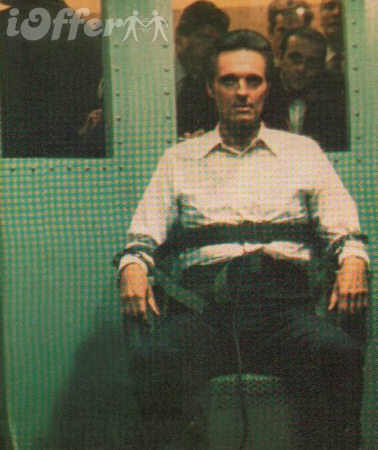
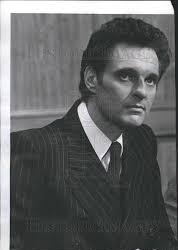
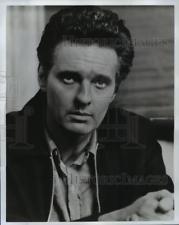

Alan Alda as Caryl W. Chessman in the 1977 movie Kill Me If You Can.
20 notes
·
View notes
Link
0 notes